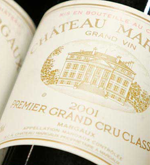Appellation Origine Controle (AOC)
French Appellation
Perhaps the earliest attempt to classify wines in France occurred in the 14th century when the princes of Béarne classified the vineyards of Jurançon in south west France. These wines were popular all over Europe at the time. Much credit for driving reform is given to Baron le Roy and his pioneering work in Chateauneuf-du-Pape in the southern Rhone just north of the historic city of Avignon. His work helped convince the authorities to undertake the formation of the INAO in 1935 (Institut National des Appellations d’Origine) as the body with the legal responsibility for administering appellations in France. The INAO is to this day the ruling body in France for the rules that govern the appellations.
They introduced a system of Appellation d'Origine Contrôlée (AOC) or Appellation Contrôlée (AC) in its shortened version, where a set of strict rules, often overseen by a local committee, was introduced. These rules covered the permitted grape types which are explicitly stated, the communes in which the grapes can be grown, the maximum permitted yields (often around 50 hectolitres per hectare), the pruning type and the permitted harvesting techniques in some appellations.
The INAO quickly recognised a number of appellations including Chateauneuf-du-Pape in the southern Rhone, Cassis in coastal Provence, Arbois in eastern France, Blaye, Bourg, Sauternes, Barsac and others in the Bordeaux region, and Gevrey-Chambertin, La Romanée, Romanée Conti, Romanée Saint-Vivant and Musigny in Burgundy (among others). In fact, during 1936, some 57 appellations were proclaimed with AOC status in a series of announcements starting on the 15th May (when Arbois, Tavel and Cassis were nominated) and running through to 8th December which saw 12 more appellations nominated including the tiny Château Grillet, Néac, Pomerol, Vougeot, Vouvray as well as others.
This work was interrupted by the Second World War but resumed soon after with the formation of a second tier called the Vin Délimité de Qualité Supérieure (VDQS). The idea was that regions wanting to gain AOC status might first be granted VDQS status prior to elevation to AOC. It also allowed some status for regions that were marginal and might not ever gain AOC recognition.
Two more levels of recognition were later established (not under the control of INAO) namely Vin de Pays and Vin de Table and these are described in more detail at the end of this discussion









